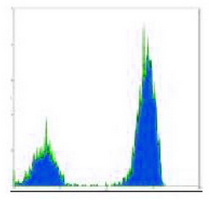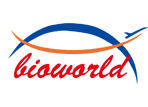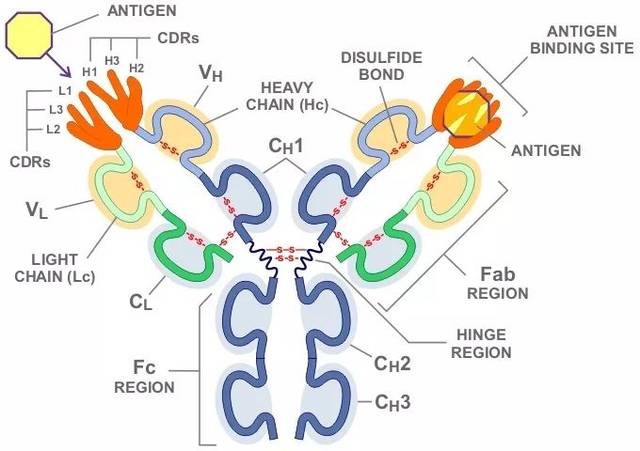Product Name :
CD3 monoclonal antibody Background :
When T cells encounter antigens via the T cell receptor (TCR), information about the quantity and quality of antigens is relayed to the intracellular signal transduction machinery. This activation process depends mainly on CD3 (Cluster of Differentiation 3), a multiunit protein complex that directly associates with the TCR. CD3 is composed of four polypeptides: ζ, γ, ε, and δ. Each of these polypeptides contains at least one immunoreceptor tyrosine-based activation motif (ITAM). Engagement of the TCR complex with foreign antigens induces tyrosine phosphorylation in the ITAM motifs and phosphorylated ITAMs function as docking sites for signaling molecules such as ZAP-70 and the p85 subunit of PI-3 kinase. TCR ligation also induces a conformational change in CD3ε, such that a proline region is exposed and then associates with the adaptor protein Nck. The CD3ζ invariant chain is a type-I transmembrane protein that exists in the TCR signaling complex as a disulfide-linked homodimer. The cytoplasmic tail of each CD3ζ monomer contains three distinct ITAM motifs, each containing two tyrosine residues. Phosphorylation of CD3ζ ITAM tyrosine residues, including Y142, is driven by recruitment of the Lck and Fyn tyrosine kinases to the TCR. Lck/Fyn-mediated ITAM phosphorylation creates docking sites that promote the SH2 domain-dependent recruitment and activation of ZAP-70, which drives amplification of signaling events downstream of the TCR that facilitate T cell activation. Phosphorylation of a pool of p16 CD3ζ leads to the generation of p21 and p23 species, which differ in the degree of ITAM phosphorylation. It has been proposed that the ratio of p21/p23 contributes to regulating the amplitude of T cell activation. CD3ζ plays an important role in the assembly and surface expression of the TCR complex. Indeed, research studies have demonstrated that CD3ζ is degraded in response to Ag-dependent TCR stimulation as a mechanism to tightly control T cell activation. Product :
Mouse IgG2a. Liquid in PBS, pH 7.3, and 0.02% sodium azide. Storage&Stability :
Store at 4°C short term. Aliquot and store at -20°C long term. Avoid freeze-thaw cycles. Specificity :
Recognizes human CD3 Immunogen :
Native purified human CD3. Conjugate :
Unconjugated Modification :
Unmodification
CD3 monoclonal antibody Background :
When T cells encounter antigens via the T cell receptor (TCR), information about the quantity and quality of antigens is relayed to the intracellular signal transduction machinery. This activation process depends mainly on CD3 (Cluster of Differentiation 3), a multiunit protein complex that directly associates with the TCR. CD3 is composed of four polypeptides: ζ, γ, ε, and δ. Each of these polypeptides contains at least one immunoreceptor tyrosine-based activation motif (ITAM). Engagement of the TCR complex with foreign antigens induces tyrosine phosphorylation in the ITAM motifs and phosphorylated ITAMs function as docking sites for signaling molecules such as ZAP-70 and the p85 subunit of PI-3 kinase. TCR ligation also induces a conformational change in CD3ε, such that a proline region is exposed and then associates with the adaptor protein Nck. The CD3ζ invariant chain is a type-I transmembrane protein that exists in the TCR signaling complex as a disulfide-linked homodimer. The cytoplasmic tail of each CD3ζ monomer contains three distinct ITAM motifs, each containing two tyrosine residues. Phosphorylation of CD3ζ ITAM tyrosine residues, including Y142, is driven by recruitment of the Lck and Fyn tyrosine kinases to the TCR. Lck/Fyn-mediated ITAM phosphorylation creates docking sites that promote the SH2 domain-dependent recruitment and activation of ZAP-70, which drives amplification of signaling events downstream of the TCR that facilitate T cell activation. Phosphorylation of a pool of p16 CD3ζ leads to the generation of p21 and p23 species, which differ in the degree of ITAM phosphorylation. It has been proposed that the ratio of p21/p23 contributes to regulating the amplitude of T cell activation. CD3ζ plays an important role in the assembly and surface expression of the TCR complex. Indeed, research studies have demonstrated that CD3ζ is degraded in response to Ag-dependent TCR stimulation as a mechanism to tightly control T cell activation. Product :
Mouse IgG2a. Liquid in PBS, pH 7.3, and 0.02% sodium azide. Storage&Stability :
Store at 4°C short term. Aliquot and store at -20°C long term. Avoid freeze-thaw cycles. Specificity :
Recognizes human CD3 Immunogen :
Native purified human CD3. Conjugate :
Unconjugated Modification :
Unmodification
-
 Flow cytometric analysis of human peripheral blood lymphocytes using Anti-CD3 Antibody, followed by anti-mouse IgG PE.
Flow cytometric analysis of human peripheral blood lymphocytes using Anti-CD3 Antibody, followed by anti-mouse IgG PE.
Bioworld Biotech only provide peptides for our antibodies and do not provide additional peptide customization services.
Price/Size :
USD 368/1mg/vial
Tips:
For phospho antibody, we provide phospho peptide(0.5mg) and non-phospho peptide(0.5mg).Describe :
Blocking peptides are peptides that bind specifically to the target antibody and block antibody binding. These peptide usually contains the epitope recognized by the antibody. Antibodies bound to the blocking peptide no longer bind to the epitope on the target protein. This mechanism is useful when non-specific binding is an issue, for example, in Western blotting (WB) and Immunohistochemistry (IHC). By comparing the staining from the blocked antibody versus the antibody alone, one can see which staining is specific; Specific binding will be absent from the western blot or IHC performed with the neutralized antibody.Formula:
Synthetic peptide was lyophilized with 100% acetonitrile and is supplied as a powder. Reconstitute with 0.1 ml DI water for a final concentration of 10 mg/ml.The purity is >90%,tested by HPLC and MS.
Storage:
The freeze-dried powder is more stable. For short time at 2-8°C. For long term storage store at -20°C.
Note :
This product is for research use only (RUO only). Not for use in diagnostic or therapeutic procedures.
 CD3 monoclonal antibody
CD3 monoclonal antibody  Datasheet
Datasheet COA
COA MSDS
MSDS SHIP
SHIP